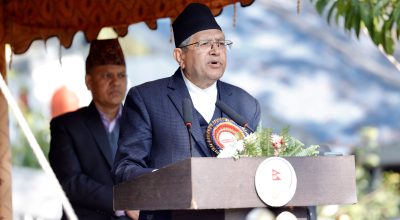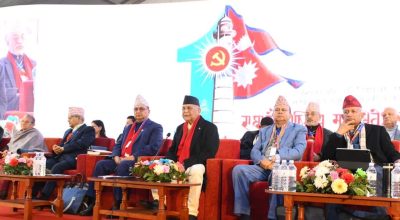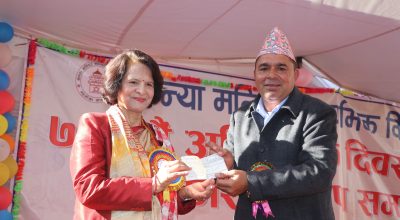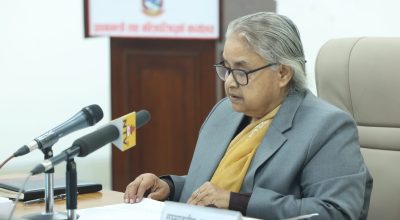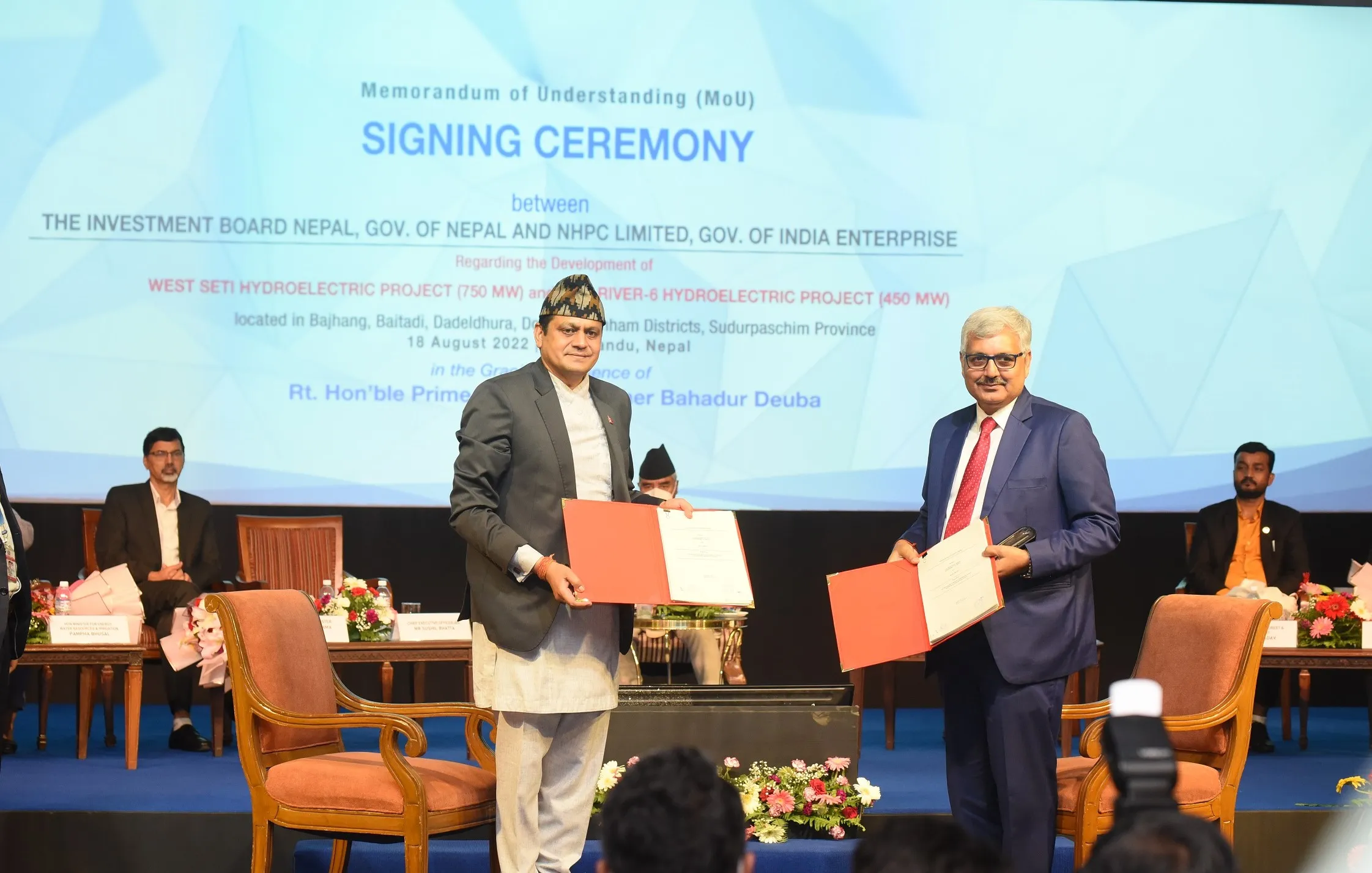
The 750-megwatt West Seti Hydro Power Project based in the Sudurpaschim Province has entered a new phase of development with the signing of a Memorandum of Understanding (MoU) between Nepal and India to this regard.
Indian state-owned NHPC Limited and the Investment Board Nepal (IBN) signed the MoU to develop the much- awaited project on Thursday. The development of the storage type project listed as the project of national pride was a dream of Nepal for around forty years.
Confusion over the implementation of the project was looming large with international companies: SMEC from Australia and Three Gorges from China, leaving the contracts to develop it in the mid.
Now, the NHPC which carries a history of developing projects equivalent to around 7,300 megawatts in Himachal Pradesh, India and other areas has agreed to develop the West Seti and 450 –megawatt Seti River-6 Hydropower Project under a bundling model.
As pledged by NHPC Chair and Managing Director Abhay Kumar Singh during the MoU signing ceremony, the Project will find its tentative shape within a year. Australian Snowy Mountain’s Engineering Corporation (SMEC) has prepared a detailed project report in regard with the West Seti and the China’s State-owned China Three Gorges Corporation has also carried out re-study on the DPR readied by the SMEC.
It would not be exaggeration to say that the Thursday’s development has obviously provided a ground to believe that we need to wait long for getting our dream for illuminated days come true.
Nepali is making efforts to explore and reach with its untapped potentials for hydropower development which is its one of the top priorities.
The decision to take the West Seti ahead is itself a significant achievement. The Arun III Hydropower Projects reports above 50 percent physical progress. Likewise, processes are ahead to develop the Lower Arun and Arun IV Projects in partnership with the Indian company Satluj Jal Vidyut Nigam, known as SJVN, the developer of the Arun III.
Prime Minister Sher Bahadur Deuba who was present to grace the MoU signing-in ceremony declared the Project is crucial not only for the development of the Sudurpaschim but also for overall economic and social development of the nation.
Chief Executive Officer of the Investment Board Nepal, Sushil Bhatta, and Chairperson and Managing Director of NHPC, Abhay Kumar Singh, signed the MoU on Thursday.
An understanding has been reached between NHPC and HIDCL regarding collaboration in energy sector in course of investment summit organised by the Board in 2019.
The proposer has to file application for West Seti Hydropower Project survey permission within 45 days after signing the MoU. There is a provision that application should be filed within six months for Seti-6 project. An arrangement has been made where the company has to submit its report at the Board after carrying out detailed project report within two years from getting survey permission. It might not take such long time as all preparatory activities of the project have already been completed.
The MoU has mentioned that different issues including estimated cost, market assurance, guarantee of financial sources should be incorporated in the report.
The two sides would hold discussion for Project Development Agreement (PDA) and the Board would facilitate it.
The Indian Company-NHPC has already constructed hydropower projects generating more than 7,000 MW power. The company has expressed commitment to complete the project on time.
NHPC to seek market in India
The Board’s meeting on August 8 this year had assigned NHPC to take charge of Project’s works. The Indian company had proposed to seek market in India for electricity produced in Nepal apart from making arrangements for financial and technical management of the Project.
Following the visit of Nepali’s Prime Minister Sher Bahadur Deuba to India in last April, the Project which was on ‘hold’ of the French, the Australian and Chinese companies time to time is now bound to proceed in a newly manner with a clear framework.
The NHPC Limited has submitted an application to the Board to implement the Project through dialogues, the Board said. Board’s 47th meeting had formed committee coordinated by vice-chairperson of the National Planning Commission Bishwanath Poudel to prepare draft on the modality of development and investment of the West Seti and Seti River-6 Joint Hydropower Project.
The Board had decided to implement the recommendations furnished by the Committee on the Project. Former Energy Secretary Anup Kumar Upadhyay viewed that there was no other better option than this Company which was owned by the Indian government and had specialization on the hydropower project.
Upadhyay further expressed, “This project will proceed now onward since NHPC is technically and economically sound and can provide market to the electricity produced here.” The locals in the project sites were waiting forever to see the Project, initiated since 2036 BS, come to fruition.
Lack of clarity on modality of construction, lack of decision on construction of transmission line, settlement of the displace ones and no determination on market for the produced electricity among others had pushed the Project in limbo for a long time. Now the Sudurpaschim folks are confident that the Project works will move ahead.
The Chinese company- Three Gorges – had also cited the same reason when it pulled out of the project.
According to officials involved in the project, the Australian company, Snowy Mountain Engineering Corporation (SMEC), which was engaged in preparing the detailed project report (DPR) of the project since August 1989, submitted its report in 1992. The agreement signed with SMEC on the build-own-operate-transfer (BOOT) model was never implemented.
SMEC kept the project ‘on hold’ for 18 years although it kept on saying it was constructing the project. Deciding that ‘enough is enough’, the government itself took ownership of the project in 2011. SMRC had stated that it will sell the electricity produced from the project to India and transfer the project in its current condition to the government 30 years from the date of starting power production.







